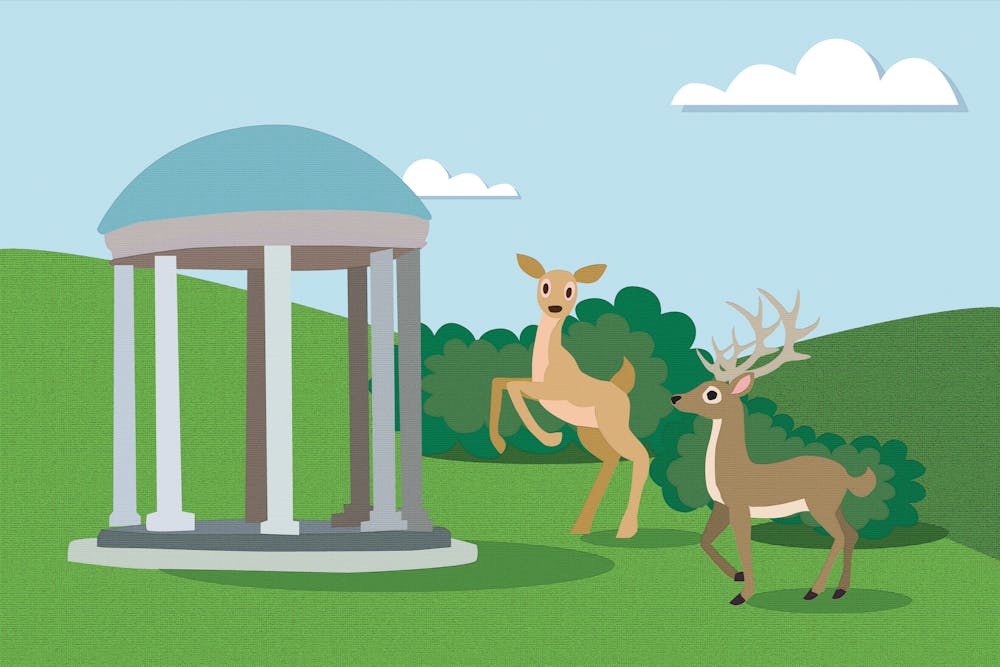It’s a common misconception, but UNC professor Paul Taillie said — deer are not forest animals.
Orange County has some of the densest deer populations in the state at over 50 deer per square mile, according to a 2020 survey by the North Carolina Wildlife Resources Commission. This is more than most of North Carolina’s western mountain counties.
Despite Chapel Hill and Carrboro having some of the highest municipal densities across the state, Taillie, an assistant professor of geography and environment, said that there is an overpopulation of deer in these areas.
Tallie said there are not many predators in urban areas, either as a result of extinction or urban development.
“You take predators away, and you have this smorgasbord of food that deer love,” Greg Batts, District 3 Wildlife Biologist for the WRC, said. “Why wouldn’t they be there?”
Batts said that there are probably more negative impacts than positive for deer in urban areas.
For starters, that smorgasbord of food is often from people’s gardens. Plants like hostas, a leafy ground level plant, are among the favorites for deer — the lack of these ground level plants are a reason why deer are not commonly found in the forest, as sunlight cannot often reach the forest floor, Taillie said.
"One urban predator for deer, though, is cars," Batts said.
The North Carolina Department of Transportation reported that Wake County had the most vehicle-deer collisions in the three-year span between 2020-2022. Between financial costs as well as injuries and casualties, Taillie said that deer related vehicle collisions are something that Chapel Hill and other municipalities are aiming to address.




